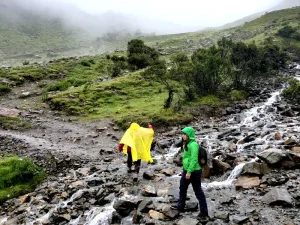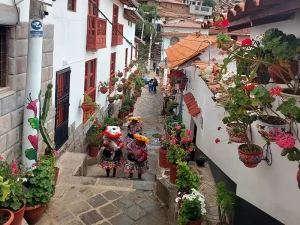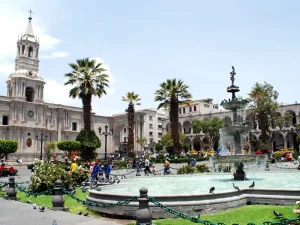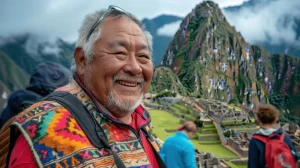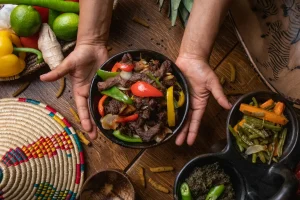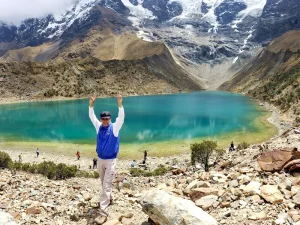What to Pack When You Visit Peru – The Ultimate Local Guide
The first time I led a group into the Sacred Valley, I’ll never forget the sight of a well-dressed traveler from Paris, shivering in the crisp Andean morning, her delicate sneakers slipping on the ancient stone path. She confessed, “I packed for the photos, not for the adventure.” That day, I lent her my spare wool hat and gloves, and over a cup of coca tea, I shared the golden rule of packing for Peru: Prepare for everything, expect nothing.
Peru isn’t just one destination—it’s a world of extremes. In a single day, you can journey from arid coastal deserts to frigid high-altitude passes, then descend into steamy rainforests. As a native guide, I’ve seen everything from frostbitten toes in the Andes to sunburned shoulders in the Amazon. But with the right gear, you’ll not only survive—you’ll thrive.
Here’s my ultimate packing guide, honed over 25 years of exploring every corner of my beautiful country.
The Golden Rule: Layering is Everything
Forget bulky sweaters and heavy jeans. The secret to comfort in Peru’s unpredictable climates is layering. This system lets you adapt to temperature changes throughout the day:
- Base Layer: Moisture-wicking fabric to keep you dry
- Mid Layer: Insulation for warmth
- Outer Layer: Protection from wind, rain, or sun
Why Packing Right for Peru Matters
Peru is a country of three worlds in one:
- The Andes: high mountains, cold nights, and sunny but chilly days.
- The Amazon Jungle: humid, hot, and full of wildlife.
- The Coast: deserts, beaches, and the refreshing Pacific breeze.
In a single trip, you might need a winter jacket in Cusco, a rain poncho in the Sacred Valley, and light cotton shirts in the Amazon. Packing wrong means either carrying too much or not having what you need when it matters most.
Region-by-Region Packing Guide
For the Andes (Cusco, Machu Picchu, Sacred Valley, Puno)
At high altitude, weather changes in minutes. Sunshine can become hail then return to sunshine before you finish your coca tea.
Clothing:
- Moisture-wicking t-shirts (synthetic or merino wool)
- Long-sleeve base layers
- Fleece or down jacket (packable)
- Waterproof/windproof jacket with hood
- Quick-dry hiking pants (zip-off versions are versatile)
- Warm hat (beanie) and gloves (even in summer)
- Comfortable hiking boots (broken in!)
- Sandals for evenings
Essential Gear:
- Daypack (20-30L) for daily excursions
- Refillable water bottle or hydration bladder
- Headlamp (for early ruins visits and power outages)
- Trekking poles (especially for Inca Trail)
- Altitude sickness medication (consult your doctor)
Pro Tip from a Local:
Don’t buy expensive altitude pills beforehand. Coca tea is available everywhere, and pharmacies in Cusco sell effective local remedies like Sorojchi Pills at a fraction of the price.
For the Amazon Rainforest (Iquitos, Puerto Maldonado, Manu)
The jungle operates on a simple equation: heat + humidity + rain = constant dampness. Your goal is to stay as dry as possible.
Clothing:
- Lightweight, long-sleeved shirts (protection from mosquitoes and sun)
- Quick-dry pants or convertible zip-offs
- Rain jacket (lightweight but waterproof)
- Wide-brimmed hat with chin strap
- Swimwear (for jungle lodges with showers or rivers)
- Multiple pairs of quick-dry socks
Essential Gear:
- Jungle-grade insect repellent (30-50% DEET)
- Waterproof dry bags for electronics and documents
- Binoculars (non-negotiable for wildlife spotting)
- Waterproof camera or phone case
- Breakproof water bottle
Pro Tip from a Local:
Pack a small bag of silica gel packets in your electronics bag. They’ll help combat the relentless humidity that can damage cameras and phones.
For the Coast (Lima, Paracas, Nazca, Máncora)
Peru’s coast boasts microclimates. Lima is often overcast and humid, while northern beaches bask in year-round sun.
Clothing:
- Light layers for Lima’s garúa (coastal fog)
- Sun protection: wide-brim hat, UV-blocking shirt
- Swimwear and cover-up
- Light jacket for cool evenings
Essential Gear:
- Reef-safe sunscreen
- Sunglasses with UV protection
- Beach towel (many hostels don’t provide them)
- Water shoes (for rocky beaches)
Seasonal Considerations
Dry Season (May-October)
- Andes: Cold nights (can drop below freezing), brilliant sunny days
- Amazon: Less rain, lower river levels, better hiking
- Coast: Lima is overcast and humid; northern beaches are sunny
Wet Season (November-April)
- Andes: Daily afternoon showers, lush landscapes, warmer nights
- Amazon: Heavy rainfall, higher rivers, spectacular waterfalls
- Coast: Lima is sunny and hot; great for beach time
Essential Documents & Money
Must-Haves:
- Passport (with at least 6 months validity)
- Photocopies of important documents (stored separately)
- Credit/debit cards (Visa and Mastercard most accepted)
- US dollars in small denominations (for emergencies)
- International driving permit (if planning to rent a car)
Pro Tip from a Local:
Always keep $20-40 in soles (local currency) in small bills. Many rural markets and small vendors don’t accept cards, and larger bills can be hard to break.
Health & Safety Items
Medical Kit:
- Altitude medication (acetazolamide)
- Anti-diarrheal medication
- Antibiotics for traveler’s diarrhea (consult your doctor)
- Rehydration salts
- Bandages, blister treatment, antiseptic
- Personal prescription medications
Safety Gear:
- Money belt or hidden pouch
- Padlock for hostel lockers
- Copies of travel insurance documents
- Emergency contact information
Photography Gear
Essentials:
- Camera with extra batteries (cold drains power quickly)
- Large memory cards (you’ll take more photos than you think)
- Portable power bank
- Lens cleaning cloths
- Dust-proof bag for desert areas
Pro Tip from a Local:
The light at Machu Picchu is best early morning and late afternoon. Midday sun creates harsh shadows. Schedule your visit accordingly if photography is important to you.
What NOT to Pack
Leave Behind:
- Expensive jewelry or watches
- Unnecessary credit cards
- Heavy books (bring an e-reader instead)
- Too many clothes (laundry services are cheap and widespread)
- High heels (cobblestone streets are unforgiving)
Pro Tip from a Local:
Leave room in your luggage! You’ll want space for souvenirs: alpaca sweaters, handmade textiles, silver jewelry, and local ceramics.
Packing for Special Activities
Inca Trail Trek
- Broken-in hiking boots
- Sleeping bag rated to -10°C (14°F)
- Inflatable sleeping pad
- Headlamp with extra batteries
- Quick-dry towels
- Personal snacks (energy bars, trail mix)
Luxury Lodges
- Smart-casual outfit for nice restaurants
- Swimwear for spa facilities
- Battery pack for longer stays without electricity
Festival Participation
- Comfortable shoes for standing and dancing
- Rain poncho (festivals happen rain or shine)
- Small daypack for carrying purchases
Packing Checklist: The Essentials
- Passport & copies
- Travel insurance documents
- Credit cards & emergency cash
- Prescription medications
- Base layers (moisture-wicking)
- Insulating mid-layers
- Waterproof outer layer
- Hiking boots
- Sandals
- Sun protection
- Insect repellent
- Reusable water bottle
- Headlamp
- Camera
- Daypack
Frequently Asked Questions
Can I buy things I forget in Peru?
Yes! Especially in cities like Lima and Cusco, you can find most everything. However, specialty sizes (especially shoes over US size 10) and quality outdoor gear may be limited or expensive.
Is it safe to drink tap water?
No. Stick to bottled water or use a purification system. Many hotels provide filtered water. Avoid ice in drinks unless you’re sure it’s made from purified water.
What’s the one thing most people forget?
Lip balm with SPF. The high-altitude sun is brutal on lips, and this is surprisingly hard to find outside major cities.
How should I dress to respect local cultures?
While beach areas are liberal, conservative dress is appreciated elsewhere. When visiting churches or rural communities, cover shoulders and knees.
Are there any items that are particularly useful but often overlooked?
A packable duffel bag. Perfect for separating dirty laundry, and essential if you plan to do multi-day treks where porters carry your main luggage.
Final Thoughts from a Local Guide
Packing for Peru isn’t about preparing for worst-case scenarios—it’s about being ready to fully embrace every experience, from misty mountain passes to vibrant marketplaces. The right gear won’t just keep you comfortable; it will let you focus on what matters: connecting with the incredible culture, history, and natural beauty of this magical land.
Remember: the best-packed bag is the one that lets you forget about your belongings and immerse yourself in the journey.Ready to experience Peru with perfect preparation? Our team at Terrific Peru Tours would be honored to help you plan your adventure. We know the seasons, the trails, and the hidden gems that make this country so special. [Contact us] to start planning your journey today!

